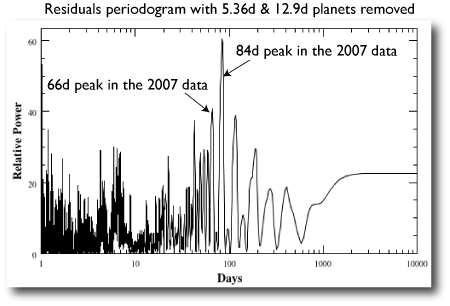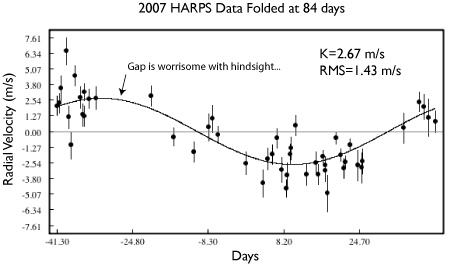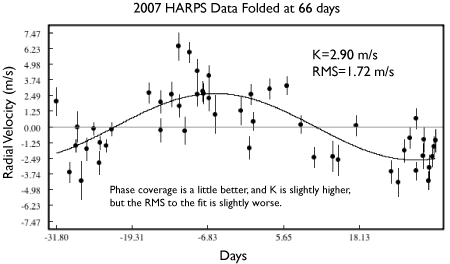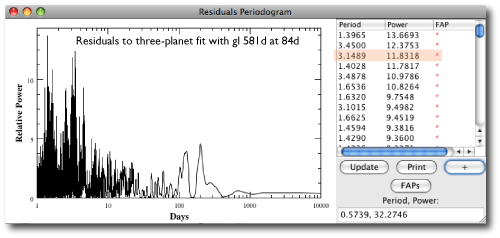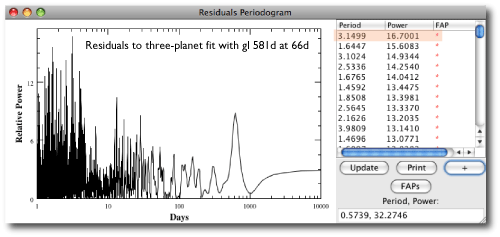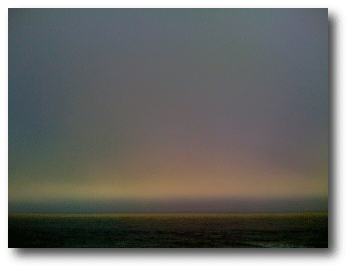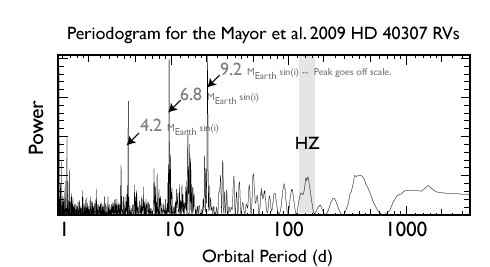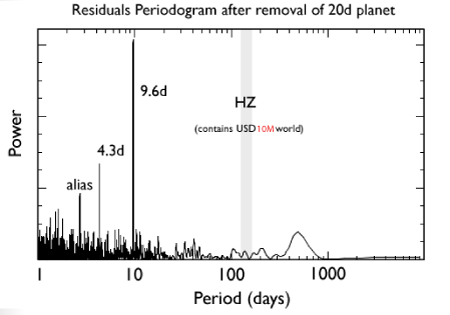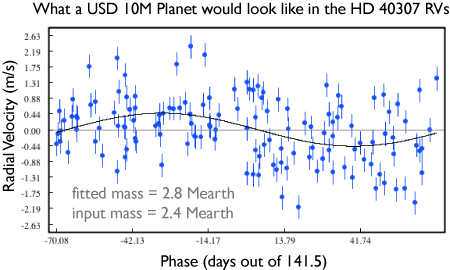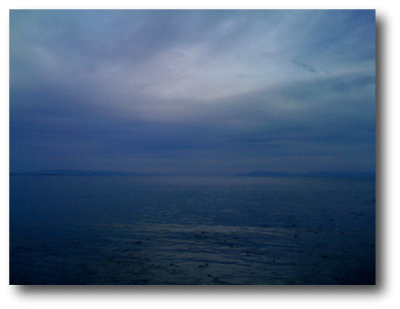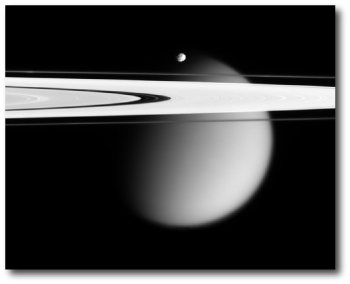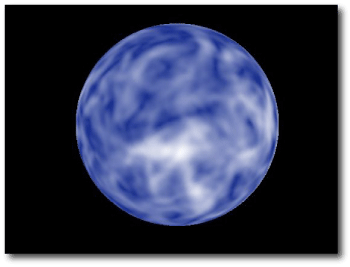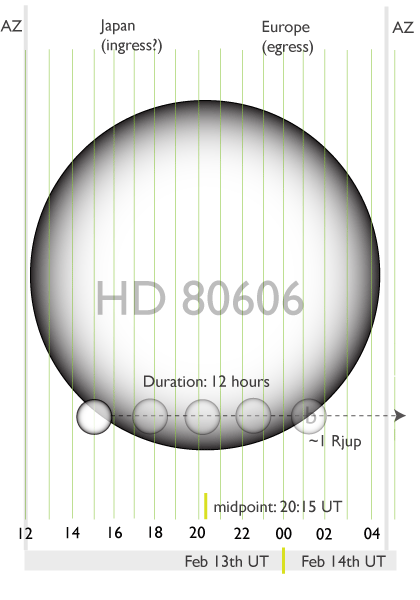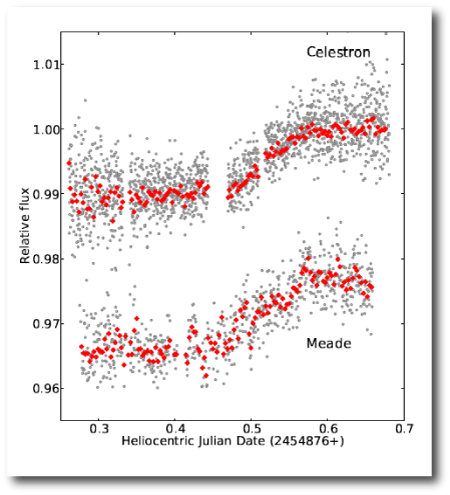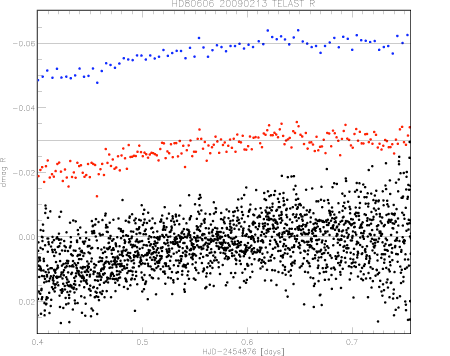
The visible universe contains of order 30,000,000,000,000,000,000,000 planets, and so this web log’s rather single-minded focus on HD 80606b (a staggering eight out of the nine most recent posts) is likely starting to wear a little thin, even for the Kid606 fan base. One more post, though, and then I’ll move along.
First, I was jazzed to get an e-mail from Mauro Barbieri (of 17156, etc. fame) reporting that two Italian amateur observers (Alessandro Marchini from Siena, Tuscany, and Giorgio Corfini, from Lucca, Tuscany) got discovery photometry of the HD 80606b transit on Feb. 13th/14th. Their light curves are of quite high quality, and, like all the European observations show the leisurely egress from transit:
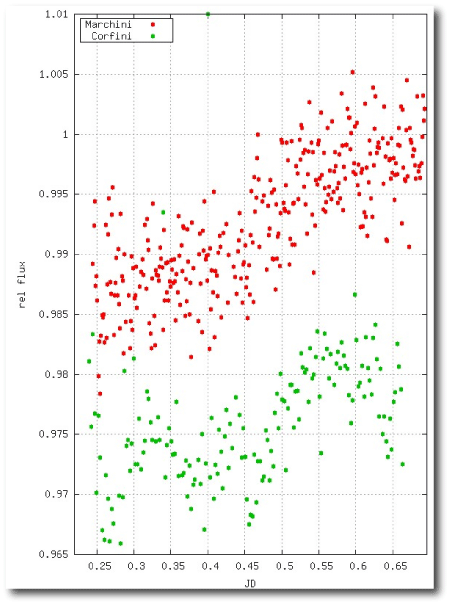
Excellent work!
A few long-time readers may recall that in the transit fever post from several years ago, I tried on a “tough guy” persona with regards to partial transits:
The transit detection problem is tough in part because it’s extraordinarily easy for systematic effects to seemingly conspire to produce an apparent signal. I would not feel confident in announcing a transit until I’ve seen multiple full-transit light curves. On the other hand, though, the false alarms play an important role. They get observers out on the sky, and spur the collection of enough data to truly rule out an event.
This hard-line attitude resulted from catching numerous infections of ingressia in which a time-series seems to show a transit starting just as observations are ending:
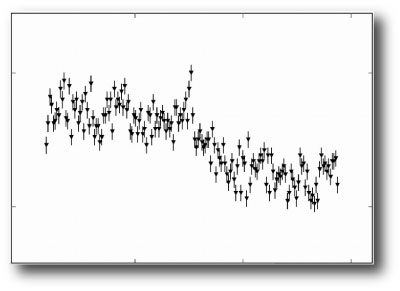
and egressia in which a transit seems to be ending just as observations are starting:
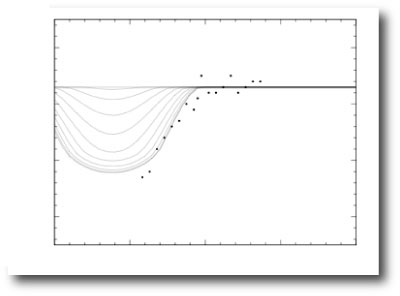
With HD 80606b, however, it’s perfectly certain that we’re not dealing with a virulent case of egressia. The transit did occur and that it will occur in the future. This confidence stems both from the fact that there are at least seven independent photometric data sets showing the egress, and from the fact that the French-Swiss team (Moutou et al. 2009) observed the transit spectroscopically via the Rossiter-McLaughlin effect.
The Rossiter-McLaughlin effect arises when a transiting planet occults part of a rotating star. When a planet passes in front of the oncoming limb, it blocks out blue-shifted light, whereas it blocks out red-shifted light when covering the outgoing limb. The resulting distortions in the spectra are interpreted as a positive and then negative shift in the radial velocity of the star. The amplitude of this effect is thus due both to the spin velocity of the star as well as to the total flux blocked out during transit:
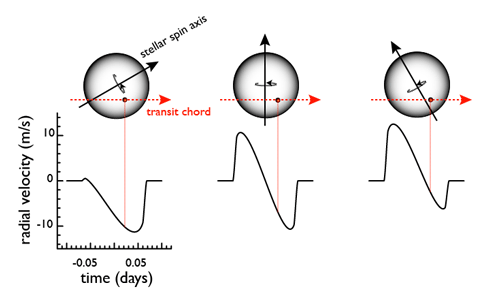
Moutou et al.’s detection of the Rossiter-McLaughlin effect for HD 80606b provided drop-dead confirmation of the transit, and also hinted that the planetary orbital plane is not aligned with the equator of the star (which is not surprising, given the probable history of the ‘606 system). Here’s a re-working of the diagram from the Moutou et al. paper that takes the London and Arizona photometry into account (you may want to make your browser window wider):

Illustrator .ai file for above image
The Arizona and London photometry rule out transits longer than ~12 hours, which strengthens Moutou et al.’s conclusion that the system is far from having the stellar equator aligned with the orbital plane.
Earlier this week, I was having an e-mail conversation with Bruce Gary, who runs the Amateur Exoplanet Archive (a.k.a. AXA). The AXA is a repository for photometric transit data from small telescopes, and a first stop for anyone interested in the detection of planets via transit timing.
Bruce wrote:
By the way, does the Rossiter-McLaughlin effect refer to the Dean McLaughlin who speculated about Mars, and who worked at the Univ Michigan Observatory in the late 1950s & early 1960s?
A bit of ADS sleuthing reveals that the two McLaughlins are one and the same. In 1924, Richard Rossiter and Dean McLaughlin simultaneously published the first measurements of spin-orbit alignment in eclipsing binary systems. Both men were at the University of Michigan — Rossiter as an assistant professor and McLaughlin as a 23-year old graduate student. McLaughlin used the famous eclipsing binary Algol to measure the time-dependent radial velocity skew in the brighter star of the system during the partial eclipse. His paper, “Some Results from a Spectroscopic Study of the Algol System”, makes a nice read today, and has garnered 45 citations since 2000. Its single figure shows the now-familiar effect, albeit with a factor-of-a-thousand increase in the scale of the y-axis:
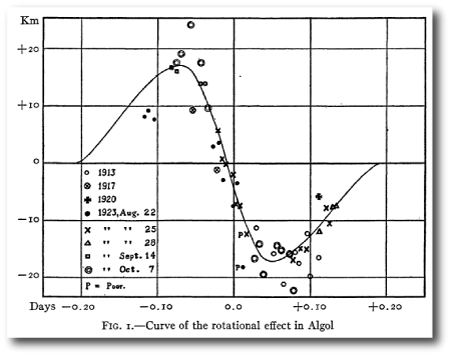
McLaughlin remained at the University of Michigan during a productive career that ended with his untimely death in 1965. He seemed to have had a sensibility that was quite in line with oklo.org. Consider, for instance, this abstract from 1944:
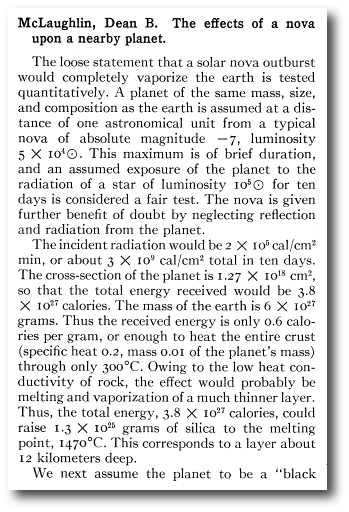
Bruce later wrote back with small-world anecdote:
As I was finishing high school my father counseled me to not choose astronomy for a profession because Dean McLaughlin’s two boys were in his Ann Arbor High School English class and their clothes gave the impression that the McLaughlins were a poor family! That influenced my decision to enter the University of Michigan’s School of Engineering, but after a year my childhood hobby won out and I switched to Literature, Science and Arts so I could major in astronomy.
Nice!

